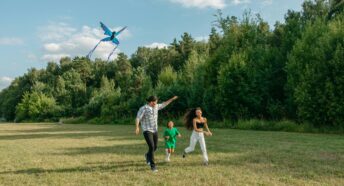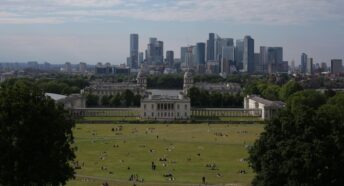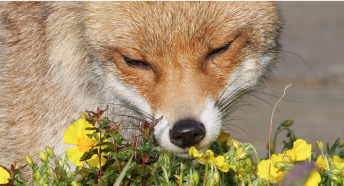1,000 new 'streetparks' for London
Let’s turn grey space green! We want each of London’s 33 borough to transform 30 streets into parks and play spaces. That’s around 1,000 much-needed new parks for London.
London has only half the green space it needs for a population its size and lack of green space is a particular problem in many parts of Inner London. We think it’s time to turn grey space green.
We believe everybody deserves beautiful, tree-filled places with lots of greenery and nature, in which to play, meet neighbours and friends, or just watch the world go by. Creating ‘streetparks’ is a realistic way to achieve this and they are slowly becoming a reality. We’re already working with local groups in Hackney, Lambeth, Southwark and Islington to support their efforts to turn a local street into a park.
Not all our streets are needed for parking or as through-routes for cars. Streetparks turn ‘grey space’, dedicated to roads and car parking, into greenspace, community open space and play space.
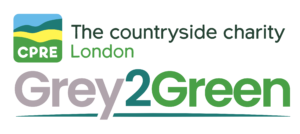
Manor Park Road. The below images show a section of Manor Park Road in Barnet. It’s a relic of the past – when ‘General Improvement Areas’ were declared in areas of run down or derelict housing to allow for regeneration as opposed to demolition or slum clearance. They came in under the Housing Act 1969 and allowed for individual property grants and schemes of general improvement to an area.
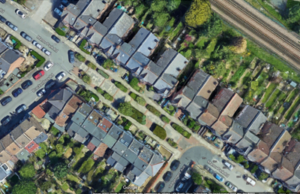
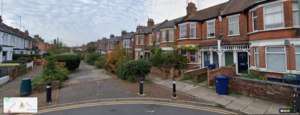
Manor Park Road in East Finchley, North London was declared a “General Improvement Area” in the late 1970s. A show house was opened to demonstrate the improvements that could be made, such as indoor toilets and extensions for bathrooms and kitchens. A scheme was also prepared for traffic management in the area, not dissimilar to the Low Traffic Neighbourhood schemes of today. This halted rat runs and created a small park, laying it out for play and recreation – a fore runner of the ‘grey to green’ concept. Consultation had to be undertaken as part of the process.
Isabella Street. The images below show aerial shots of Isabella Street in Southwark in 2013 and now – and also a Google Streetview image showing how it has become an amazing tranquil green space with restaurants and cafes operating from under the arches.


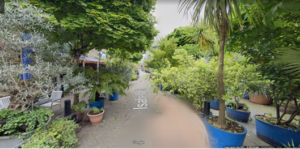
Murrain Road. Below is what was once Murrain Road in Hackney – now a space for recreation and play.
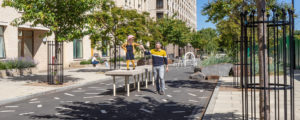
Alfred Place Gardens. And this (below) is what was Alfred Place in Camden. The second image shows how it is now – Alfred Place Gardens. This is an area where the vast majority of people travel on foot and by public transport. The many people working in the area have precious few options to get some air during their lunch break. By closing the road to traffic (except for access to buildings) the Camden Council has made this street into a linear park.
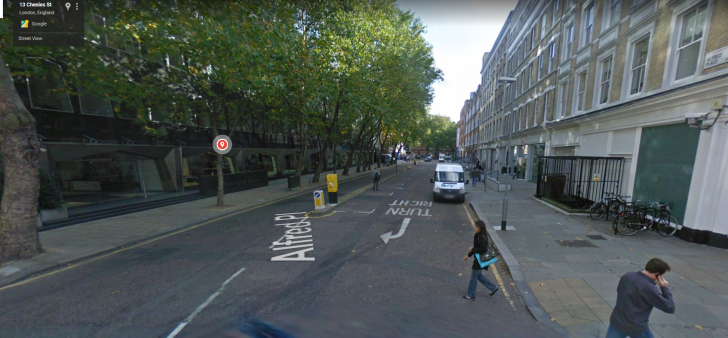
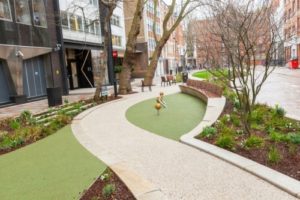
Van Gogh Walk. This is Van Gogh Way in Lambeth – before, when it was a road, and now – it’s a space for play and recreation.
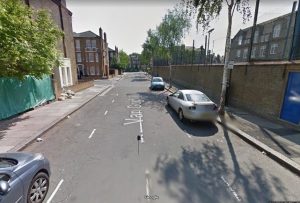
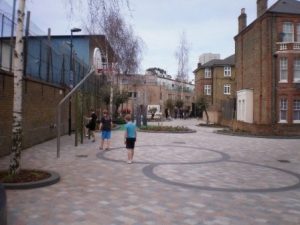
Amsterdam – a street in Amsterdam which has been turned into a play space
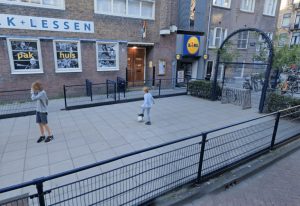
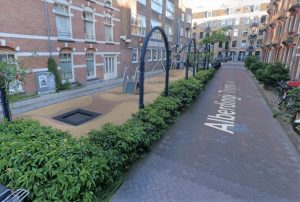
Paris – This street in Paris has been pedestrianised and planted – image courtesy of @CommutedeParis on Twitter – before & after
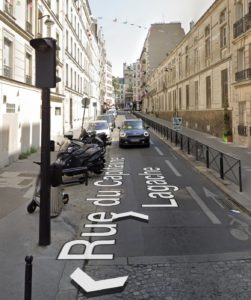
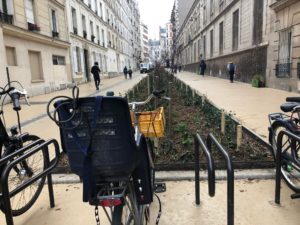
Barcelona – this space is in Barcelona has been turned into a play space. Image courtesy of @QAGreenways on Twitter – before & after
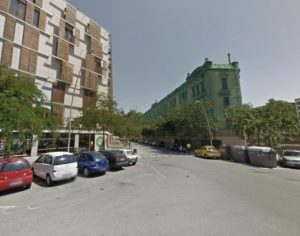
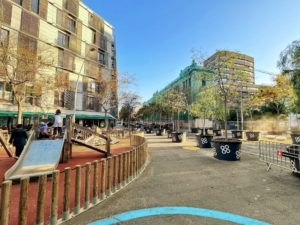
Tulse Hill. This one is just a dream – before & after! Courtesy of @TulseHillLTN on Twitter. We want to help local community groups or campaigners to create similar visualisations. Message alice@cprelondon.org.uk if you would like to discuss.
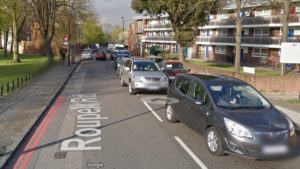
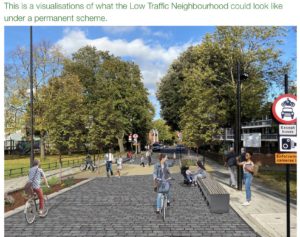
Removing parking is an important aspect of ‘streetparks’. This image of the Mall in central London – closed to traffic but also free from parking, shows how the absence of parking makes the space more attractive as well as safe. The space essentially becomes part of St James’ Park on weekends.
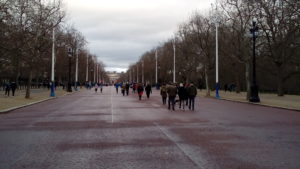
Boroughs can identify areas with low car ownership which are often areas with lots of people living in flats, often with many people on low incomes. These can be matched up with parts of the borough which lack green space. Those should be the locations for a minimum of thirty new parks in each London borough.
If a major scheme like those shown above is unaffordable, instead boroughs can identify streets which are not needed for through-traffic, place bollards or planters to make them traffic-free, remove the car parking and enable kids to play out with light-touch measures like street markings. The community can also be enabled to create greening and seating with ‘parklets’ under a license agreement.
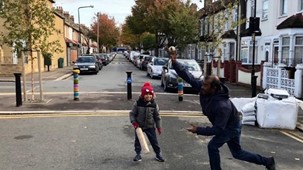
Councils can use planters instead of bollards which are also a relatively cost-effective way of creating safe streets. These are now becoming a common site in London as boroughs introduce ‘Low Traffic Neighbourhoods’ to promote walking and cycling, like those in Hackney shown here. The street would need to be entirely closed to traffic to become a streetpark, though.
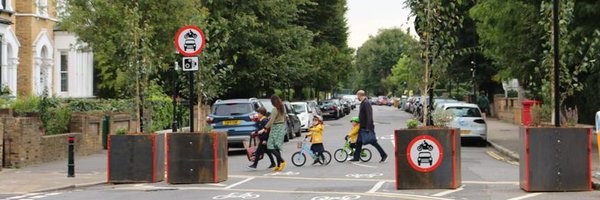
Boroughs can enable residents to make spaces attractive by removing parking and allowing them to create ‘parklets’ in their street, with planters for flowers or seating. Here are some parklets in Hackney. They can be seating or planting, or both: either way they are a cost-effective way of making people-friendly ‘park streets’. Find out about the Parklets Campaign and get advice on creating a parklet from climate charity Possible.
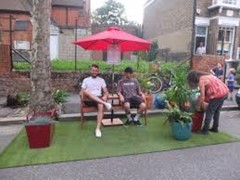
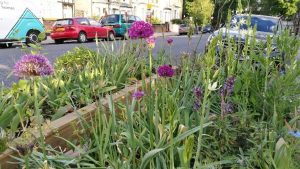
There are many streets where there is more space given to parking than is actually needed by residents. This often becomes clear when Controlled Parking is brought in – as happened with this street in an Inner London borough which was relatively close to a train station.
BEFORE


If a major scheme is too expensive… the bigger transformation can be brought in over time as and when funds allow.
Image credits:
- Murrain Road image
- Alfred St images After and Before: Google Maps
- Boy and man playing cricket: Sustrans here
- Parklet with flowers – CPRE London image.
- Parklet with people
- Introduction of Controlled Parking. Image with lots of parked cars: Google Maps. Image with far fewer parked cars: CPRE London image.
- Trees between car parking spaces
- Marylebone High St proposals
- Amsterdam play areas – Google Map
This blog was originally published in October 2020. It was updated in January 2022 and September 2022.





